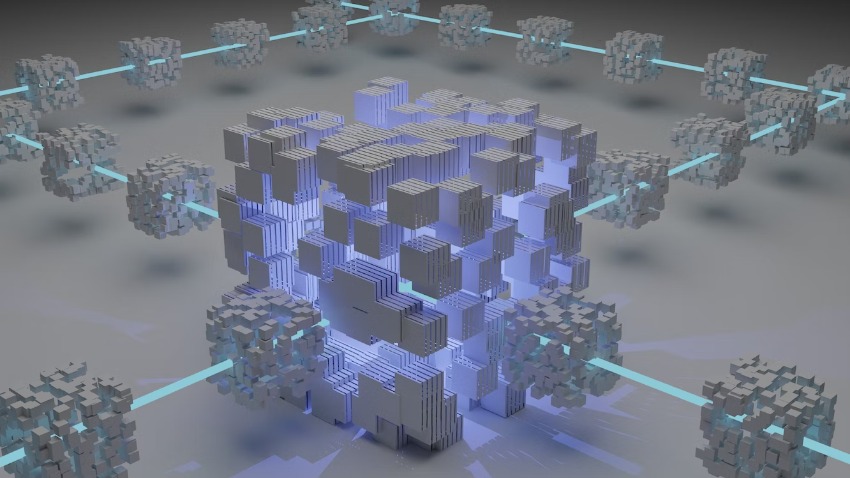Layer 0 has become the talk of the town since 2022. Almost everyone in the blockchain and crypto sphere has heard about this blockchain architecture, but what exactly is Layer 0? Layer 0 is the first layer of the blockchain that allows easy and efficient interaction with other protocols, creating something known as “value chains.”
In this blog, we’ll cover an in-depth analysis of Layer 0 blockchain, its benefits, and its key features.
What are Layer 0 Blockchains?

A Layer 0 blockchain is a foundational layer that provides the underlying infrastructure for other blockchains (particularly Layer 1s) to be built on top of. It is the blockchain network’s physical layer, comprising hardware, miners, connections, and a support framework for other decentralized protocols.
Layer 0 blockchains are designed to be highly scalable and interoperable, and they can help to solve some of the challenges that other blockchains face, such as scalability and security. This layer operates at the lowest level of the protocol stack and presents itself as a base or a building block for the network.
Layer 0 is important for a blockchain system because it provides decentralization and keeps the network safe. Moreover, by using a unique consensus mechanism, Layer 0 ensures that not a single entity has control over the network, which eliminates things like censorship, hacking, and manipulation.
It is also quite important for enabling interoperability between various networks. Interoperability refers to the connection between two or more blockchains so they can share data. Layer 0 is also a base layer on which Layer 1 protocols are built, allowing easy, seamless, effective, and secured communication.
Now let’s talk about the key features of a Layer 0 blockchain.
Features of Layer 0 Blockchain

Here are some of the key features of Layer 0 blockchains:
Scalability: Layer 0 blockchains are designed to be highly scalable, and they can handle large volumes of transactions per second. This is achieved through various techniques, such as sharding and parallel processing.
Interoperability: Layer 0 blockchains are designed to be interoperable with other blockchains and systems, allowing for seamless transfer of assets and data between different platforms. This is achieved through the use of common protocols and standards.
Security: Layer 0 blockchains are designed to be secure, and they use a variety of security mechanisms to protect the network from attack. These mechanisms include consensus mechanisms, encryption, and access control.
Flexibility: Layer 0 blockchains are designed to be flexible and can be customized to meet the specific needs of different applications. This is achieved through the use of modular architecture and open-source development.
Decentralization: Layer 0 blockchains are designed to be decentralized, and any single entity does not control them. This is achieved through the use of a distributed consensus mechanism.
Benefits of Layer 0 Blockchain
These benefits make Layer 0 blockchains a promising technology for a variety of applications, such as:
Cross-chain interoperability: Layer 0 blockchains can be used to connect different blockchains, allowing for the seamless transfer of assets and data between different platforms. This can be useful for a variety of applications, such as DeFi, NFTs, and supply chain management.
Enterprise applications: Layer 0 blockchains can be used to build secure and scalable blockchain-based applications for enterprise use. This can be useful for a variety of applications, such as supply chain management, healthcare, and financial services.
Gaming and entertainment: Layer 0 blockchains can be used to build decentralized games and entertainment platforms. This can be useful for a variety of applications, such as gambling, social media, and gaming.
Popular Layer 0 Blockchains
Overall, Layer 0 blockchains offer a number of potential benefits over traditional blockchains. They are more scalable, interoperable, secure, flexible, and decentralized. This makes them a promising technology for a variety of applications.
Here are some specific examples of how Layer 0 blockchains are being used today:
Cosmos: Cosmos is a Layer 0 blockchain that is designed to be highly scalable and interoperable. It is used to connect different blockchains, allowing for the seamless transfer of assets and data between different platforms.
Polkadot: Polkadot is another Layer 0 blockchain that is designed to be highly scalable and interoperable. It is used to create a network of independent blockchains that can communicate with each other.
Avalanche: Avalanche is a Layer 0 blockchain that is designed to be highly scalable and secure. It uses a unique consensus mechanism that allows it to process transactions quickly and efficiently.
Horizen: Horizen is a Layer 0 blockchain that is designed to be highly secure and private. It uses a variety of privacy-preserving technologies, such as zero-knowledge proofs, to protect the privacy of users.
These are just a few examples of how Layer 0 blockchains are being used today. As the technology continues to develop, we can expect to see even more innovative applications for Layer 0 blockchains in the future. Moreover, there will be newer techonlogies that will keep on evolving, but it seems like Layer 0 will remain the secured layer and a basis for other layers on Blockchain.











